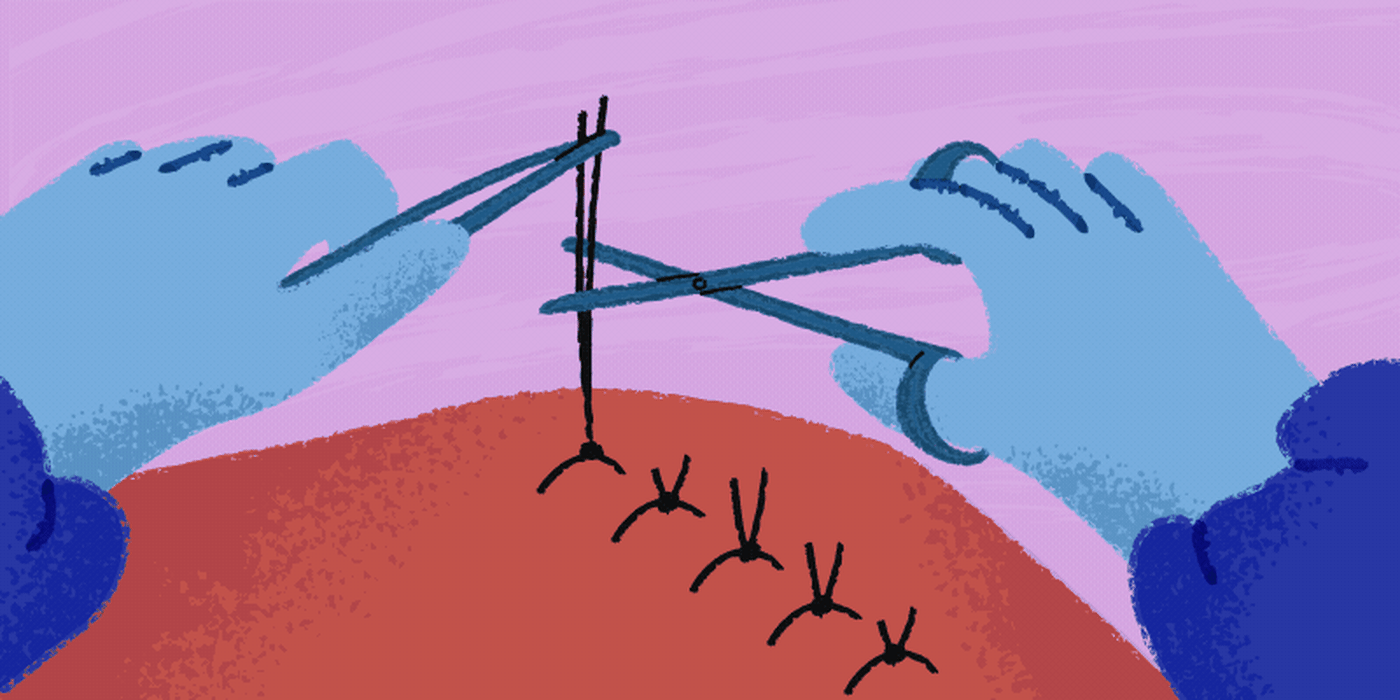As we entered the fifth hour of the procedure, I pondered how my performance would be measured as I passively, silently observed the marvel before my eyes. For an inexperienced medical student, this was as much a meditation, with its internal rumination, rigid posture, and purposeful concentration, as it was an active learning exercise.
During my first month in the OR, I concluded that success was measured by my ability to cut suture to the appropriate length at every opportunity. It was critical to have the mayo scissors in hand and ready before the opportunity presented itself. Not only was I to know the difference between 2 mm and 3 mm, but I was to anticipate how long to cut the stitch based upon the suture type and the situation.
Despite a mounting awareness within the surgical ecosystem, I was still reticent to disclose my disappointment about a seemingly constant failure to cut the suture to the correct length. “No, no, no! Too short,” I was told sternly by my attending. “OK, longer next time,” I replied timidly. Then, just a few minutes later: “Rookie mistake. Too long!” It seemed I was destined to fail, to be verbally reprimanded with a rising authoritative voice for every slow, clumsy move.
My understanding continued to evolve, and I thought more deeply about my experience wielding scissors, that hallowed duty of wide-eyed junior trainees across the globe. The team was doing a partial hepatectomy, dealing with an organ that “bleeds like hell” by all scientific accounts from leading liver surgeons far and wide. The focused silence was broken by the attending, with one of the astute remarks about the practice of surgery that you will occasionally hear after many trying hours in the OR: “I want every stitch perfect. Every knot, every cut, everything … PERFECT!” We weren’t tailoring suits after all — these were living, breathing human bodies.
At that moment, the purpose of the perpetual knot cutting exercise came into sharp focus. It was not so much about how many millimeters the suture tail was, but about your state of mind, attention to detail, and situational awareness. This situational awareness, what some called learning to “read the surgeon's mind,” is a critical component of surgical training. During my orientation prior to beginning my first surgery rotation, residents passed on this expectancy of telepathy, which to the novice pupil seemed preposterous. Yet after only a few short weeks of full immersion in the “theater,” my acceptance and cultivation of the art of surgical telepathy was well underway.
Now in my third year of surgical residency, I am well versed in mind reading. I am deliberate and anticipatory in my movements, and I strive to complete every step with precision. Yet I also recognize my perspective has become more nuanced. The length of a suture tail matters, but every technique and step in a procedure falls along a continuum of importance and difficulty. One cannot and should not perform every step as if it is the most critical step of the case. Yes, how you cut the suture or drape the patient matter, but nothing happens in isolation. If it takes 20 minutes to drape the patient, you’ve failed, no matter how perfect the draping. One of my mentors calls this “knowing when to coast, and when to drive.” It is not only about the details themselves, but about prioritizing them to carry out an effective and efficient operation.
This is an added challenge for the budding surgeon. One must learn not only techniques and movements, but efficiency, organization, speed, and prioritization. These are the skills that often take decades of operative experience to become proficient at. Unfortunately for the learner, there is often a direct conflict between perfection and efficiency. In my first months of internship, I was both a slow and clumsy surgeon. Every stitch was not perfect, and I constantly grappled with the tension between striving for perfection and moving at snail’s pace. I learned I had to sacrifice perfection at times for the sake of efficiency, lest the senior resident take over the case and my learning opportunity. As a lifelong perfectionist, this early compromise was difficult to stomach, but in talking to others, I believe it is part of our unique learning pathway.
Ultimately, trainees discover there is theory behind surgical dogma. What may initially seem an eccentric preference or meaningless particularity becomes reasonable. The details, from draping the patient to sewing together 4 mm blood vessels, can affect the outcome. The song and dance of learning surgery is not only obsessing over details, but also understanding how to prioritize these details. Cut a stitch right because it matters; but do it deliberately and with the appropriate allotment of time and mental energy.
How do you balance perfection and efficiency in the OR? Share your balancing acts in the comments.
Dr. Benjamin Ostrander is a current otolaryngology resident at UC San Diego. He loves beach days, long bike rides, cooking elaborate recipes, and playing music. Ben is passionate about art and design, creativity, surgical innovation, and global health. Ben is a 2021–2022 Doximity Op-Med Fellow.
Animation by Diana Connolly







